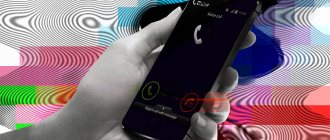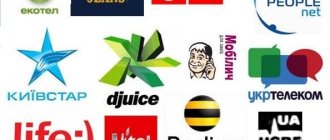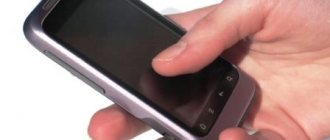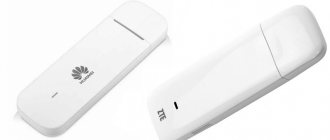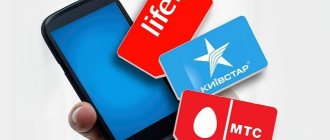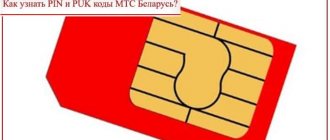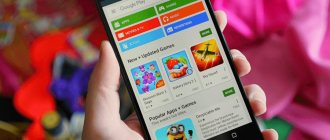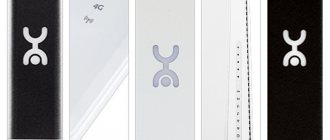Modern smartphones are becoming more and more multifunctional and versatile. You will no longer surprise anyone with the photo and video recording function, satellite navigation and voice recorder, instant messengers and Internet navigation. Phones and various visual codes are also well read, among which a QR code occupies a significant place along with the barcode. And if you are just understanding the functionality of the latter, and are looking for the most convenient tool for scanning them, then our material is just for you. In it we will look at how to read a QR code online using a mobile phone. We will also describe useful tools that will help with this.
What is a QR code and how does it work
QR codes can be found everywhere - from websites to billboards. They resemble barcodes, but instead of vertical stripes they consist of small squares. They are increasingly being used and becoming more popular, so many smartphones now come with a built-in QR code scanner.
What are these QR codes and how do they work? We will talk about them in this article.
How to read an encrypted QR image on iOS phones
The functionality of Apple phones has a built-in functionality for reading QR codes, eliminating the need to install any external application on the smartphone.
You can scan such a code online on such a smartphone using the following steps:
- Open the camera app. Starting with iOS 12, Control Center has a special tool for reading such codes. If you don't see the QR code icon in Control Center, just go to the Settings app and click on Control Center. Next, select “Customize Controls.” In the "Advanced Controls" section, find "QR Code Scanner" and click on the green "+" icon to add it. Now it will be easily accessible directly from the iOS control center. You can easily access it by swiping down from the top right corner of the screen;
- Position your phone so that the QR code directly appears in the digital video finder;
- The camera app should automatically recognize the picture;
- Run the code. If you scan it using a reader in Control Center, it will automatically launch the corresponding app or website online. However, if you use the camera app to scan the code, your iPhone will not run the recognized code. Instead, a notification bar will appear at the top of the screen indicating that the QR code has been recognized, usually with a brief description of the purpose (for example, opens a web page);
- If you think the code is safe, click on the notification bar to run the code.
If the functionality of the built-in application does not suit you, try alternatives in the form of QRScanner, QR Reader for iPhone, Quick Scan.
A Brief History of the QR Code
The first QR code system was invented in 1994 by specialists from the Japanese company Denso Wave, a subsidiary of Toyota. The production needed a way to accurately track the cars and parts they produced. To do this, it was decided to develop a type of barcode that could be used to encode Japanese characters, Latin letters, numbers and some other symbols.
More than a barcode
A regular barcode can only be read in one direction – from left to right. Therefore, it can store a relatively small amount of information - usually letters and numbers.
A QR code can be read in two directions (hence why it is also called a “two-dimensional barcode”) – horizontally and vertically. This allows you to store more data in it.
The goal of the developers was to create a recognizable format that can be scanned from any angle, so that the code is easy to spot and does not require wasting time choosing the correct scanner position. This is how they came to the now well-known square code, which is still used today.
The development of the first QR code took more than a year. It could hold up to 7,000 numbers and kanji characters and was read ten times faster than a regular barcode.
QR code technology becomes open
The QR code has quickly taken root in the automotive industry. This was especially important at the time, as many Japanese consumers were demanding greater transparency from large corporations. They wanted to know exactly where goods were coming from - not just cars, but also food, medicine and other products. Thus, the QR code gradually penetrated into all industries.
Its creators at Denso Wave have been generous by making the technology for creating and reading QR codes publicly available and waiving their patent rights. This means that even now anyone can create and use their own QR code. Nevertheless, at first the idea took root with difficulty. It was easy to create the QR code itself, but scanners for it were not available to everyone. Until…
2002: First QR code readers in mobile devices
In 2002, the first mobile phones with a built-in QR code scanner were released on the Japanese market. As a result, the number of companies using QR codes increased and the first QR codes for consumers began to appear.
Meanwhile, technology continued to develop. In 2004, a micro-QR code was created, and in 2008, an iQR code was created, which can have either a square or rectangular shape.
Around this same time, the first iPhone burst onto the market, making QR code scanners even more accessible to consumers around the world. Realizing the potential business and marketing benefits, firms and organizations began creating their own QR codes.
The Golden Age of QR Codes
In 2012, 18 years after its introduction, the QR code received the Good Design Award, which recognizes outstanding industrial design.
By this point, QR codes were being used all over the world - they could be seen everywhere, from billboards to magazines and flyers, and even in some more unexpected places.
Denso Wave continues to improve upon the original QR code design today. Modern QR codes have built-in features such as tracking and anti-counterfeiting. There are also many new uses for QR codes, from payments to object positioning in augmented reality.
The difference between a QR (Quar) code and a linear barcode
A barcode (linear or 1D code) is an image (alternating stripes of different thicknesses) on the surface (packaging) of goods or on a label, intended to optimize goods accounting. Information from a barcode is read using technical means: scanners, PCs or smartphones. The use of coding allows you to quickly identify a product, enter it into the goods accounting system, and track the route from the manufacturer to the final buyer.
The barcode performs not only informative and identification functions, but also many others:
- automation of inventory control;
- convenience of organizing the movement of goods (shipments, transportation, storage);
- increasing the speed and quality of customer service.
In our country, the most popular linear codes are thirteen (JEAN-13) and eight (EAN-8) digits.
EAN-8 stands for:
- the initial two digits are the state code;
- then five digits - the manufacturer's code;
- verification digit (calculated based on previous digits based on a specific algorithm).
Decoding JEAN-13:
- three digits - the code of an organization that is a member of EAN International (for example, for the Russian Federation - 460-469);
- six digits - manufacturing organization;
- then a combination of three numbers - the product code within the company;
- check number.
The barcode cannot be placed in areas where other marking components are already present: inscriptions, drawings or perforations.
Subscribe to our channel in Yandex Zen - Online Cashier! Be the first to receive the hottest news and life hacks!
A QR code is a more modern, advanced two-dimensional (2D) barcode that has the ability to store more useful information than a linear one.
The abbreviation QR stands for "quick response". This code is universal, with almost unlimited possibilities; it can be applied to any flat surface and have different sizes: from 21x21 modules (version 1) to 177x177 (version 40).
In a barcode, information is read horizontally and is limited to 30 characters, but a QR code provides much greater possibilities: data is read both horizontally and vertically, and the volume can be about 4000 characters.
You can encrypt a wide variety of data into a quar code: sales receipts, links to Internet sites, contact information and much more. After scanning (if the site’s web address is “hardwired”), the code automatically redirects the user to the desired address, opening it in the browser. If the code contains encrypted text, a photograph or a drawing, they are displayed on the screen of the reading device. If this is an encoded sales receipt, you will be able to see information about the product, access a promotion coupon, or use a discount.
The main advantage of QR encryption is the high speed of information processing. This is especially convenient for use in banking and all areas related to the movement of goods. Using this technology makes it easy to pay for a purchase by just scanning a code, without using bank cards.
How the payment process works:
- the buyer approaches the checkout with purchases;
- the seller scans all goods, calculates the total amount and creates a QR code;
- the buyer enters the payment application on his phone or tablet, scans the code and makes a payment;
- the seller, after receiving notification that the payment has been made, generates a check;
- The buyer receives a notification (SMS or in-app notification) about the payment made.
Payment by code is a relatively new option for using existing technology, but it is gaining more and more love among users.
A two-dimensional barcode placed on an advertising banner instantly redirects users to a form for placing an order or paying for goods. At the same time, the technology guarantees reliability and security during any financial transactions.
1. Ask our specialist a question at the end of the article. 2. Get detailed advice and a full description of the nuances! 3. Or find a ready-made answer in the comments of our readers.
How is a QR code read?
The QR code pattern encodes a sequence of data in binary format.
The reader recognizes a standard QR code by three square marks located at its corners. Having detected them, the scanner reads everything that is in the square they define,
and then parses the QR code, representing it in a grid. Each individual grid cell is assigned a value based on color (black or white). The cells are then grouped into larger patterns.
What is a barcode and why is it needed?
The barcode hides information about its type and place of manufacture of the product. A rough analysis of numbers encoded in the form of strips of different widths will not provide much information: the barcode database will provide most of it. It differs for each store depending on the assortment presented for sale. This will become known: price, name, product photos and other characteristics that are known to the store.
It is not necessary that the code be presented as black lines enclosed in a rectangle on a white background. You can simply indicate it in numbers. Some manufacturers take a smart approach to the design of entire packages, which is why barcodes are sometimes presented in various interesting shapes and colors. Still don't know how to scan a barcode on Android? Read our material to the end, where we described all possible methods.
How does a barcode differ from a QR code?
A QR code allows you to encode any information that can be displayed back on any device. Barcodes require connection to a database (that is, the use of special applications for each store) to obtain detailed data.
To make it easier to remember:
- QR code – equilateral, with large squares at the corners;
- barcode – striped, often (but not always) located in a rectangle.
Barcodes in stores usually indicate combinations of numbers. Despite the ability to encode other characters, it is not widely used. There are different coding standards, but the average user has no use for them - this information is important mainly for manufacturers.
Codes starting with the number "2" are unique to each store. This means that the selling company can label products this way at their own discretion, if the manufacturer has not applied the sticker themselves (the most striking example is fruit in supermarkets).
QR codes have already been discussed on the site in the text “How to scan a QR code on an iPhone.” There is also an article relevant for Android.
What does a QR code consist of?
A standard QR code consists of six components:
Indentation
This is the white border around the outer edge of the QR code. Without this frame, the scanner will not be able to determine what needs to be read - it will be interfered with by surrounding elements.
Search pattern
Typically, a QR code contains three black squares - in the lower left, upper left and upper right corners. They “tell” the scanner that there is a QR code in front of it, and show where its outer boundaries are and how it is oriented.
Leveling pattern
This smaller square, located closer to the lower right corner, ensures that the QR code can be read even if it is skewed or rotated.
Sync bars
This L-shaped line running between the three squares of the search pattern helps the scanner identify individual squares in the code, and also allows even a damaged QR code to be read.
Version
This small data field near the top right square of the search pattern indicates the version of the QR code being read (see "Four Versions of a QR Code").
Data cells
The rest of the QR code contains the actual information, such as a link, phone number, or message.
Four versions of the QR code
QR codes have many purposes, but there are four main types that are most commonly used. The QR code version determines how the data is encoded and is called the "input mode". There are numeric, alphanumeric, binary and kanji coding. The encoding method is indicated by the QR code version.
Digital coding
Used for decimal numbers from 0 to 9. This is the most capacious method of storing data, allowing you to record up to 7089 characters.
Alphanumeric coding
Used for numbers 0 to 9, capital letters A to Z, characters $, %, *, +, -, ., /, :, and space. Allows you to store up to 4296 characters.
Binary coding
Used for characters from the ISO-8859-1 encoding and can store up to 2953 characters.
Kanji
Used to store Japanese characters as double-byte Shift JIS characters. This is the original encoding developed by Denso Wave. However, with the advent of other modes, it became the least efficient, since it can only store 1817 characters.
There is also a second kanji encoding, ECI, which uses the UTF-8 character set. However, not all modern scanners can read it.
There are also two additional modifications of the main types of encoding:
Structured completion mode
This method converts a set of data into multiple QR codes, allowing you to read up to 16 QR codes at a time.
FNC1 mode
This method allows the QR code to perform the same functions as a GS1 barcode.
Benefits of a QR code
The QR code was created as an improved alternative to the barcode.
More data than a barcode
A barcode contains only one line of data. The most common type of barcode, used for example to identify products in trade, stores a set of digits of a fixed length. Although barcode formats exist for encoding long strings that also contain letters and other symbols, they are quite cumbersome.
QR codes are more compact, store more data, and support a wider range of characters. At the same time, they are just as easy to create and print.
Less mistakes
Has it ever happened that you picked up an item, took it to the checkout, and the barcode scanner showed something completely different? Rarely, but this happens - usually because the barcode was not protected from duplication. And the increased capacity of the QR code allows you to build error protection into it.
Easy to read
Unlike a barcode, which requires special technology to read and interpret, a QR code can be scanned and decoded using a smartphone or digital camera. This makes it much more useful, for example, for marketing campaigns aimed at consumers.
Easy to type
As with a barcode, a QR code requires printing in black and white (although it can also be printed in color).
Increased reliability
The information in the QR code can be encrypted, which will serve as additional protection.
Using the phone and its capabilities
Not all owners of modern gadgets know that new generation smartphones can read QR codes without applications. For those who have only recently “discovered this secret”, scanning codes first becomes a new entertaining game-entertainment, and then becomes fixed in habits as a convenient tool for obtaining information.
“The main thing is that a person’s environment “supplies” him with QR codes.”
We found that owners of Apple smartphones can work with codes through the camera without any problems. This feature is installed on the device as a factory setting. But with smartphones running on the Android operating system, difficulties may arise, since not all cameras of these gadgets are adapted to work with codes. So the majority of modern smartphone models already contain this function, and some still have to use third-party free applications.
Therefore, if you see a QR code somewhere, feel free to study the information. It is often very interesting and even useful.
Different types of QR codes
QR codes can look different, but the most common are the five types listed below. They have approximately the same capabilities, only the appearance differs.
QR code
This is the original version of the QR code created by Denso Wave in the 1990s. It is easily recognized by its three search patterns in the lower left, upper left and upper right corners.
Aztec
The Aztec code was developed by Welch Allyn. It is similar to a QR code, but contains only one search pattern located in the center.
MaxiCode
This type of QR code is used by the US Postal Service. Like the Aztec code, it has a search pattern in the middle, but instead of squares it uses a hexagon (“honeycomb”) pattern.
PDF417
The strangely named PDF417 barcode was invented by Yingjun Wang of Symbol Technologies in 1991, three years before the QR code. This code is rectangular in shape and looks like a cross between a QR code and a barcode.
Semacode
Semacode, developed by the software developer company of the same name, is a data matrix similar to a regular QR code, but without the characteristic search patterns.
How to read using special programs?
If your phone is not designed to read QR codes using standard means, you will have to download the application. You can find it in the Play Market. Their functionality is approximately the same. For example, consider the QR Code Reader application.
@irkutskout.ru
It is quite popular and works flawlessly. To read the code, you must perform a number of actions:
- Find the application icon and click on it.
- Point the camera at the code - it should fall within the frame.
- Select an action (go to the website).
If you are not familiar with the English language, you may find it helpful to decipher some of the meanings that may appear.
- “Share” - share the received information;
- “Search” - find the received text in Google search (results will be returned);
- “Copy content” - the content of the QR code will be added to the clipboard;
- “Ad” - opens an advertising banner;
- “Browse website” - opens the link in the browser.
Among the disadvantages of the program, it should be noted that it is in English, as well as the presence of advertising. But you can live with them.
Another similar application is QR Scanner. It is also available for Android. If you saved the picture on your phone, you can use an online scanner. The saved file is loaded into it. Another well-known application is Google Lens. To install it, you must launch the Google Play Store. There, open a page called Google Lens. Then you will need to install the application. Then permission must be given. You can start scanning codes. After scanning, you should run Lens to obtain information.
@novost.msk.ru
How to Scan a QR Code Using an iPhone, iPad, or Android Device
Most smartphones come with a built-in QR code scanner. Some of the latest smartphones, such as the Google Pixel or iPhone, have a QR scanner built into the camera.
Some tablets, such as the iPad, also have this feature.
Older models may require a special application to read QR codes - there are plenty of them in the Apple App Store and Google Play.
Reading a QR code using a mobile device is very simple:
- Open the QR code scanner on your device or simply turn on the camera (if it supports reading such codes).
- Point the camera at the QR code - it should be recognized from any angle.
- The decrypted information (for example, contact information) will instantly appear on the screen.
How to read a QR code on smartphones with Android OS
Unlike iOS phones, not all phones support QR scanning. Google Assistant works well with these codes. Press and hold the Home icon or say “Hey Google,” then tap the Google Lens icon in the Assistant menu.
If you have a Samsung smartphone with Bixby capabilities, then the functionality of the latter also allows you to automatically detect QR codes.
Google Pixels also allows you to simply open the Camera app and scan using the viewfinder.
Otherwise, you will need to install a third-party application on your phone to read QR codes online on your phone. We recommend "Free QR Code Scanner" which is a simple and effective option for such an app.
Next, do the following:
- Launch a scanning app (Bixby, Free QR Code Scanner, Samsung Optical Reader, Google Pixel camera app, or any other app for reading such codes installed on Android phones that can be found on the Play Store) ;
- Place the picture with the code within the digital viewfinder. Hold your phone level for accurate recognition;
- Having recognized the code, the application will offer a list of actions (going to the site, downloading something, opening the application, and so on). If you trust the source, choose the option that suits you.
What information can a QR code contain?
Like barcodes, QR codes are used to store data, such as website links, phone numbers, or text up to 4,000 characters long.
QR codes are also used for other purposes, namely:
- for direct links to download applications from the Apple App Store or Google Play;
- for online verification of accounts and data;
- to provide access to Wi-Fi (the QR code stores data about the access point, such as SSID, password and encryption type);
- to send and receive payment information;
- and much more - UK company QR Memories even creates QR codes for headstones so people can find out more about the deceased.
Where to find a QR code on a Samsung phone
Nowadays, most Android devices are equipped with built-in software for working with QR coding. These are simple programs that are directly connected to the video camera. To activate the option in the settings, click the special button.
Now your phone is ready to read and use the encoding.
Where can you find QR codes
QR codes were originally invented to track parts in auto production, and are still widely used in the industry today.
They are also used in other industries where strict accounting of products and supplies is necessary - in construction, engineering, and trade.
Postal services around the world are also increasingly relying on QR codes to track packages because they can store a lot of data, such as the delivery address.
QR codes have also found application in educational institutions. For example, in the library, with their help, students can find the books they need.
Examples of using QR codes in marketing and advertising campaigns
In everyday life, QR codes can most often be seen on advertising materials.
Many advertisers use them - it's a faster and easier way to direct people to the site they want than a URL that needs to be entered manually.
A QR code can even link directly to a product page - for example, a poster of a model wearing a fashionable dress might have a QR code that links to an online store page where the dress can be purchased.
QR codes can also be found on the packaging of your favorite products. They can help you find out, for example, about the nutritional value of a product or about special offers.
QR codes can be placed almost anywhere. So don't be surprised if you start seeing them everywhere, from business cards to signs and receipts.
Options for using QR codes in different countries of the world
Among the main ones are payments for goods and services by the population of Asian countries. In China, almost everyone pays using the built-in capabilities of the feature-rich WeChat app. With its help, goods are paid for at the checkout, monetary gifts are given by transfer (the so-called “red envelopes” are very common among the Chinese), and even alms are given to city beggars.
Traditional Chinese red envelopes are given as gifts during the holidays. Thanks to WeChat, they have become electronic.
According to iResearch, mobile payments volume in China in 2018 was 72.1 trillion yuan, or approximately $10 trillion. The lion's share of this was made by payments using QR codes.
The widespread use of this type of payment was facilitated by the Chinese company Inspiry, which in 2003 invented a fast way to read codes. True, at the beginning of the 2000s, payment still took place only within 15-20 seconds. Subsequently, the difficulties were overcome and the process was accelerated, and the growth in the volume of payments went up exponentially. For comparison, since 2011 it has grown almost 1000 times and every year it has grown by at least a quarter.
At the same time, in Europe and the USA, people encounter QR codes much less often. For example, according to surveys in the USA, only 20 percent of sellers know how to use them, and approximately the same number of people have scanned a QR code at least once in their lives. There are certain attempts at promotion, but they are very weak and consist only of placing special marks on architectural monuments, in public places and on advertising materials.
Exceptions are isolated cases, such as the Australian brand UGG and the American company Sennheiser, which have implemented QR code-based authentication. After opening the package, the buyer is asked to scan the code. If it is not there or the system generates an error, the buyer can return the product to the store, since it is counterfeit.
Russia has moved a little further on this issue. For example, we have had a standard for the use of QR codes in documents for several years now. It allows you to organize document flow at enterprises and provide more convenient payment for utility bills. The problem is that few people use it.
In March - April 2021, a number of countries? including Russia, due to the coronavirus pandemic, they began to introduce systems to control the movement of citizens using QR codes.
How to create a QR code
Although a QR code is not so simple, you can create one without any problems.
There are dozens of different QR code generators for mobile devices on the Apple App Store and Google Play.
You can also use an online generator, such as one of these:
- qr-code-generator.com
- the-qrcode-generator.com
- qrcode-monkey.com
Using the generator, you can easily create a QR code from the information you have (be it a website address, contact details, event link or text message), customize the design, instantly download the resulting image and share it.
The finished QR code can be printed on different media or depicted in a more unusual way.
QR creative
In 2021, more than 2,500 students at Sias International University in the Chinese city of Zhengzhou formed the world's largest QR code from open umbrellas. The length of one side was 51 meters. The code was successfully scanned and the students received a special offer from the ride sharing company.
Also in China, in the village of Xilinshui, on an area of about 500 hectares, more than 130,000 juniper bushes were planted in the form of a QR code, which can be viewed from above. The code contains a link to the village's official tourism website.
Many companies have come up with their own original ways of placing QR codes. Here are some unusual places where you can find QR codes:
- stamp impression;
- T-shirts;
- tags for Christmas gifts.
What it is
QR-code is an abbreviation for Quick Response Code, which translates as “Quick Response Code”, or in a simplified version “Quick Response”. It was developed in 1994 by Denso, but was used only to automate processes in automobile factories. Only after a while did he enter our daily life
It is a two-dimensional barcode, which has an advantage over a regular barcode.
“It allows you to “pack” more data, is read from any angle, is highly visible and can even be branded (have different colors and built-in images of brand logos). By scanning a QR code, a person instantly gains access to the information encrypted in it,” the expert said.
Frequently asked questions about QR codes
Does a QR code have to be black and white?
No. Any colors can be used as long as they create a noticeable contrast between the light and dark areas. The QR code can even be multi-colored.
How many people use QR codes?
It is known that QR codes are becoming more and more popular. According to Scanova and Statista, the number of QR code users will reach 11 million in 2021 - a significant increase from 9.76 million in 2021.
There are three main reasons for this growth: first, smartphone penetration increased from 10% in 2014 to 36% in 2018; secondly, the provision of high-speed mobile Internet increased from 48% in 2014 to 61% in 2021. And thirdly, many modern smartphones come with a built-in QR scanner, which makes QR codes more accessible.
How secure are QR codes?
You can put any information, including phishing information, into a QR code.
A competent hacker can also embed a link to malware in a QR code or force a mobile phone user to send paid SMS.
And in the case of QR codes with URLs, there is a risk that the site at the specified address will be hacked. There is a known case where the QR code of a German spice manufacturer mistakenly sent users to an adult website.
Areas of application
At the moment, QR codes are mainly used to convey the following information:
• Link to website, social media profile, YouTube channel, etc. • E-mail • SMS • Electronic pass • Phone number • Business card (which, when scanned, is automatically saved in the phone book of the smartphone) • Documents for downloading • Discount coupons • Address (geolocation) • WiFi name and password • Etc.
As the expert explained, codes can often be seen in advertising materials when it is necessary to convey more information to the consumer about a product/service or accompany him to the next stage of marketing communication. It is worth noting that during the pandemic, QR codes began to be used as passes to confirm an agreed or justified exit from home.
pixabay.com/geralt
